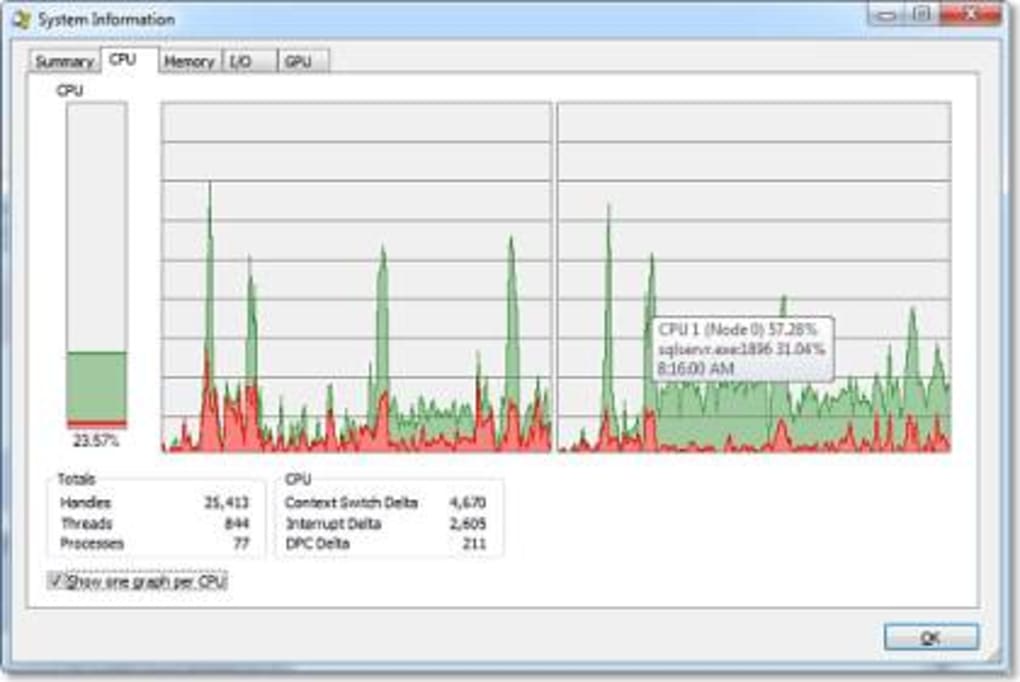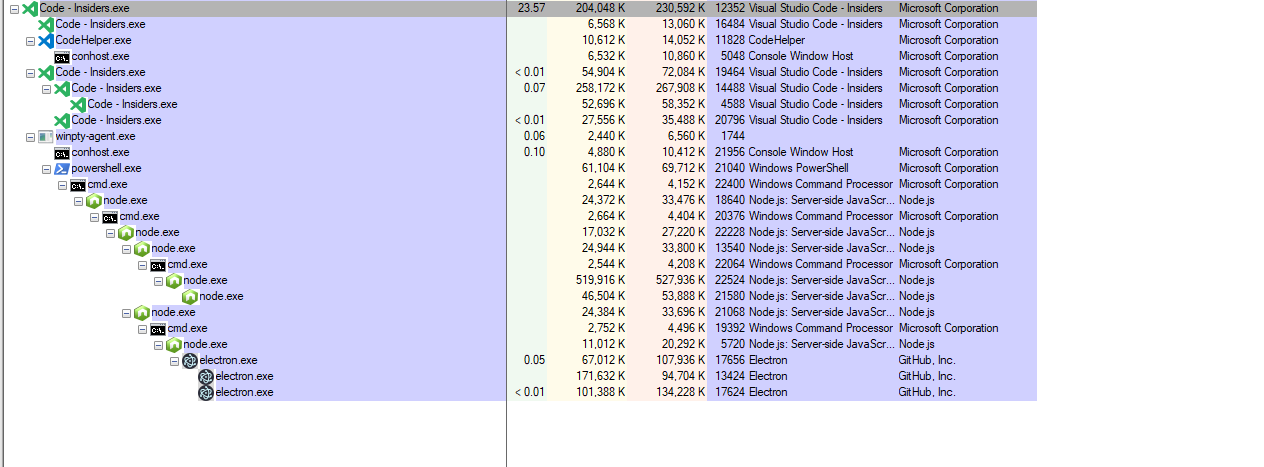

processes use many shared memory objects, and the size of these objects is reflected in the stat. If it’s worth the time to use one of these tools then it’s probably worth the time to use both, and you will commonly find yourself doing this. Working set does not exclusively refer to memory your process owns however. In daily use I often start with Process Explorer to find processes which are consuming a lot of system resources and then move to process monitor to dig deeper into these processes. Using it you can find out what files, DLLs, and registry keys particular processes have open and the CPU and memory usage of each.

Track Process Creation and Exit Time Using Process Monitor.
#Process explorer vs process monitor windows
Process Explorer is considered to be a more advanced form of the Windows Task Manager. When you attempt to delete a file or folder which is in use by a process, the File In Use. Process Monitor will tell you all the processes that are active on the system and which files they are accessing or linked to. It can also identify the Application that is opening the. You can think of this as a combination of the old FileMon and RegMon tools with some basic diagnostic features. A powerful feature that allows you to search for processes that are using a specific handle or DLL. This tool will display information regarding the file system, registry, and the processes running on the system as they are occurring. 3RECONNAISSANCE WITH PROCESS MONITOR AND PROCESS EXPLORER Cheat Engine and OllyDbg can help you tear apart a games memory and code, but you also need to. Process Explorer is a freeware task manager and system monitor for Microsoft Windows created by SysInternals, which has been acquired by Microsoft and. Process Monitor is a real-time troubleshooting tool. Process Monitor is the perfect complement for Process Explorer and is designed to monitor and obtain additional information about each system process to provide. I’ve written tips on both of these and frequently see people confuse them or even ask about the differences between the two. Can be easily set to replace Windows Task Manager in options.Ĭloser to techie toy and resource hungry… But it’s best in it’s class.Process Monitor and Process Explorer both have a lot in common as they are both Microsoft Sysinternals tools designed to help you troubleshoot and debug processes on a Windows host.
#Process explorer vs process monitor portable
Writes some settings to registry so not completely portable but works without installation. Process Explorer is a powerful tool that can be used to monitor the processes running on a Windows operating system. Process Explorer shows you information about which handles and. Process Monitor can be used to detect failed attempts to read.

OverallĮxcellent (as usual) freeware utility from Sysinternals. Ever wondered which program has a particular file or directory open Now you can find out. Process Monitor monitors and records all actions attempted against the Microsoft Windows Registry. It also seems like Task Manager cannot show values over 100, but Resource Monitor can. Process informationĭouble-clicking any process gives one more window with application-specific load graphs, network connections and plenty of other info. It all adds up to be pretty simple: Process Explorer shows the usage of the cpu without any scale, Task Manager and Resource Monitor show it with a scale of the current CPU speed (except for the Details tab for some reason). service threads Volatility tool ProcMon tool IP. Depending on task at hand Process Explorer can be used to show anything from developer information embedded in executable to per-process CPU graphs. groups procedures.htm file Process Explorer tool Process ID field process. Customizing viewĭefault view may not seem like much but there are a lot of additional columns available. Clicking performance graphs shows separate window with bigger version of those and plenty of performance-related information.


 0 kommentar(er)
0 kommentar(er)
